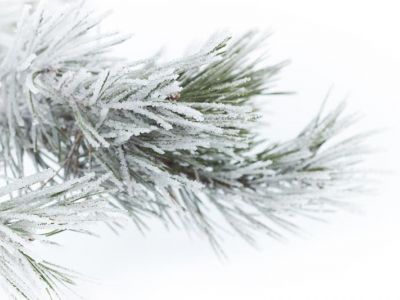Seasonal Home Maintenance
-
Spring
- Check for damage to your roof from winter storms. During the spring and summer, get your roof inspected after major storms or hail to check for damage.
- Blow out your sprinkler systems and restart outdoor water sources.
- Uncover and check all exterior faucets for leaks or damage.
- Have an HVAC professional inspect and maintain your air conditioning system.
- Examine and replace extension cords that have become worn or damaged to avoid electrical fires.
- Repair cracked, broken or uneven driveways and walkways to prevent trips and falls.
- Check the shutoff valve at the water main and each plumbing fixture to make sure they work and aren’t leaking.
- Make sure your fire extinguisher is accessible and operable. Fire extinguishers cost about $20 to $40, depending on size.
- Clean lint buildup from the clothes dryer exhaust duct, damper and space under the dryer to prevent fires.
-
Summer
- Check play equipment for damage, and repair if necessary.
- Inspect your wood deck or concrete patio for deterioration. Reseal your wood deck to extend its life and prevent water damage.
- Hire an arborist or tree trimmer to remove damaged or dead trees that might fall on or near your home.
- Examine exterior siding for chips or damage, and repair as needed.
- Check window and door locks to ensure they lock properly.
- Check your home for water leaks and/or damage.
-
Fall
- Drain sprinkler systems and other outdoor water sources and cover outdoor pipes to prevent freezing.
- Mow and rake your lawn, and winterize your garden. Bring plants in during cold spells to prevent frost damage.
- Rake leaves and aerate your lawn. At the end of the season (and before snow falls), clean the gutters.
- Clean the interior of major kitchen appliances before the holidays.
- Drain, clean and cover your swimming pool if you live in a colder climate.
- Empty gas-powered lawn equipment of fuel to avoid damage.
- Hire a certified chimney sweep to inspect and clean flues and vents.
- Re-caulk/seal around doors and windows to keep cold air out.
- Protect your air-conditioning unit with a waterproof cover.
- Clean lint buildup from the clothes dryer exhaust duct, damper and space under the dryer to prevent fires.
-
Winter
- Inspect the roof, gutters and downspouts for damage or debris after snow storms.
- Check the basement for water leaks during thaws.
- Clean refrigerator and freezer drip pans, and vacuum coils.
- Ensure all electrical holiday decorations have tight connections and that any exterior decorations are labeled for outdoor use only.
- Clean the kitchen exhaust hood and air filter of build-up. You’ll be using your stove and oven a lot more during the holidays.
- Check your water heater for leaks and pressure issues. Consider installing a leak detector to prevent costly flooding damage.
As a homeowner, it’s always a good time of year to tackle the items on your home maintenance checklist to ensure your home stays in tip-top shape through the rest of the year. Divvying up home maintenance tasks by season can help spread out costs and keep things more manageable so you don’t get overwhelmed. Here’s a handy home maintenance checklist of tasks for each season, as well as items to tackle monthly.

- Check and test smoke and carbon monoxide alarms.
- Snake and clean all drains as necessary — tubs, showers and sinks — to avoid costly plumbing problems.
- Check heating, ventilation and air conditioning, or HVAC, filters and change, if necessary, to keep your system running at maximum efficiency. This is especially important if you live in a warmer climate and run your AC most of the year.
- Clean your dishwasher screen to get rid of trapped food particles that can block water flow and affect efficiency.
- Wash out and disinfect trash cans to avoid odors and bugs.
- Examine your utility bills for major spikes in usage. It could be a sign of major issues with your home’s systems, or that you need to adjust your usage habits.
1. Getting a furnace/heating tune-up
A heating system needs to be serviced once a year, typically at the start of the heating season. A qualified professional will change the filters and check for dangerous carbon monoxide leaks to keep it running at top shape, says Dan DiClerico, home expert at HomeAdvisor, a platform that matches service professionals with homeowners.
Cost: $285
Potential savings: Replacing a furnace costs an average of $4,250; major repairs could run as high as $1,200. You might add $100 or so in higher heating bills during the winter if your furnace becomes inefficient, too.
2. Eliminating ice dams
Ice dams can cause serious roof damage, as the water works its way under the roof shingles and into soffit vents. Inadequate attic insulation is usually the culprit, allowing heated air to warm a roof and melt snow. With the spring thaw, the chance of serious leaks inside the house goes way up, DiClerico says.
Cost: $1,500 for full attic insulation, or a few hundred dollars to fill in minimal spots
Potential savings: Preventing ice dams can avoid replacing an entire roof, which costs an average of $7,500. It could also prevent water damage to interior ceilings and walls.
3. Cleaning the gutters and downspouts
Gutters and downspouts clogged with leaves and other debris can cause the rainwater to overflow — and that can lead to costly repairs. Regularly cleaning gutters can prevent water damage, DiClerico says. Ideally, you should clean the gutters and downspouts in the fall and spring, and check them monthly.
Cost: $150 for professional gutter cleaning
Potential savings: Repairing a ceiling that’s been damaged by water can cost about $670. Runaway roof water can wear down foundation walls, and that repair can run as high as $4,000.
4. Dehumidifying your home
Keeping your home’s humidity to 30 to 50 percent consistently can keep the growth of moisture-loving dust mites and mold at bay. “A dehumidifier is the quickest defense, especially if you have a damp basement, which can harbor a lot of allergens,” DiClerico says.
Cost: $1,300 to $2,800 to install a dehumidifier. Basement models average between $1,300 and $1,800, while crawl space units are $1,500 to $2,000. Whole-house versions range from about $1,500 to $2,800.
Potential savings: High humidity levels that lead to serious mold outbreaks require professional remediation, which costs an average of $7,500. Larger jobs may start at $10,000 and up.
Note: All costs referenced above come from HomeAdvisor’s True Cost Guide.
If you don’t have the expertise or time to handle these tasks, hiring a professional can help you stay on top of things. Here are quick tips on how to hire a contractor or service professional from Katherine Hutt, director of communications with the U.S. Better Business Bureau.
Ask friends and family for references. After you have some names to work with, look the providers up on BBB.org to check their rating for complaints against the business.
Make sure you read bids and contracts thoroughly. Don’t let anyone pressure you to sign on the spot. If you don’t understand something, ask for clarification.
Know the difference between an estimate and a contract. Ask for a spec sheet of what services or products you want so you can compare bids. When it’s time to put things in writing, request a contract that details the warranties, payment schedule, itemized list of each service being performed, and a timeline of completion.
Don’t pay for projects upfront. This is especially true of major remodeling projects. Hutt recommends that you structure payments in three parts: one-third upfront (as a deposit), one-third halfway through, and the final one-third after completion.
Protect yourself from subcontractors and suppliers. Add a clause in your contract requiring the contractor to pay all subcontractors and suppliers prior to final payment. Otherwise, those companies or individuals may come after you (the homeowner) for payment and put a lien on your house, Hutt warns.

ORILLIA Office Hours:
By Appointment Only
Contact: Lauren McNair
(Sales Representative)
Tel: (705) 828-6449
KAWARTHA Lakes Office Hours:
By Appointment Only
Contact: Coming Soon
RICHMOND HILL Sales Office Hours:
Coming Soon
Copyright © 2023 MANCINI Homes. All Rights Reserved. || Website Development by E-griculture.com



